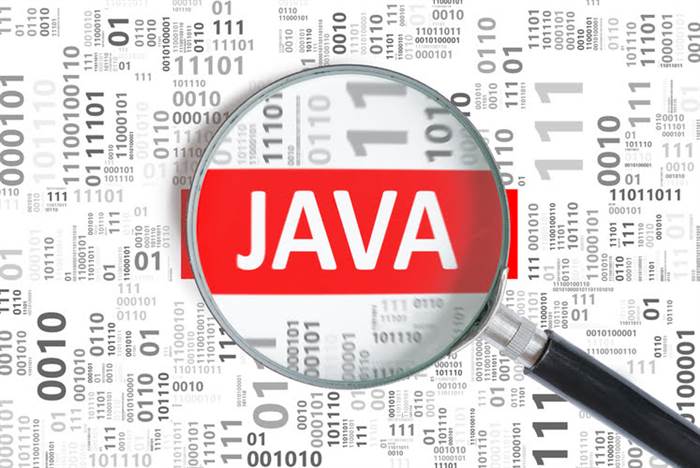While computational linguistics has more of a focus on aspects of language, natural language processing emphasizes its use of machine learning and deep learning techniques to complete tasks, like language translation or question answering. Natural language processing works by taking unstructured data and converting it into a structured data format. It does this through the identification of named entities (a process called named entity recognition) and identification of word patterns, using methods like tokenization, stemming, and lemmatization, which examine the root forms of words.

NLU goes a step further by understanding the context and meaning behind the text data, allowing for more advanced applications such as chatbots or virtual assistants. NLU is a subfield of Natural Language Processing (NLP) that focuses on understanding the meaning behind human language. If users deviate from the computer’s prescribed way of doing things, it can cause an error message, a wrong response, or even inaction. However, solutions like the Expert.ai Platform have language disambiguation capabilities to extract meaningful insight from unstructured language data. Through a multi-level text analysis of the data’s lexical, grammatical, syntactical, and semantic meanings, the machine will provide a human-like understanding of the text and information that’s the most useful to you.
What is NLU (Natural Language Understanding)?
NLP uses machine learning algorithms and statistical methodologies to help users better interpret text. These algorithms take language as an input and output a range of results depending on the task at hand, such as part of speech tagging. NLU algorithms are a type of deep learning algorithm that can be found pre-installed on AI platforms. A product must meet certain criteria to be considered for inclusion in the Natural Language Understanding category. Create a deep learning algorithm that is optimized for human-to-human linguistic interaction. Natural Language Understanding (NLU) has become an essential part of many industries, including customer service, healthcare, finance, and retail.
Organizations need artificial intelligence solutions that can process and understand large (or small) volumes of language data quickly and accurately. These solutions should be attuned to different contexts and be able to scale along with your organization. It’s critical to understand that NLU and NLP aren’t the same things; NLU is a subset of NLP. NLU is an artificial intelligence nlu machine learning method that interprets text and any type of unstructured language data. Additionally, businesses often require specific techniques and tools with which they can parse out useful information from data if they want to use NLP. And finally, NLP means that organizations need advanced machines if they want to process and maintain sets of data from different data sources using NLP.
What is Natural Language Processing?
Importantly, though sometimes used interchangeably, they are actually two different concepts that have some overlap. First of all, they both deal with the relationship between a natural language and artificial intelligence. They both attempt to make sense of unstructured data, like language, as opposed to structured data like statistics, actions, etc. It can help you identify the sentiment, the subject, and the most important words in a sentence. The answer to the question of whether or not natural language understanding software is worth it is a resounding yes.NLU software is worth the investment if you are in a business where you need to communicate with your customers. NLU is also involved in natural language generation, which involves generating text or speech that sounds natural and coherent to humans.
- By utilizing NLU techniques, AI systems can generate responses or explanations that are more human-like and easier to understand.
- In NLU, deep learning algorithms are used to understand the context behind words or sentences.
- Whether you’re on your computer all day or visiting a company page seeking support via a chatbot, it’s likely you’ve interacted with a form of natural language understanding.
- Together with NLG, they will be able to easily help in dealing and interacting with human customers and carry out various other natural language-related operations in companies and businesses.
- Built using the latest AI, ML, DL, and NLU/NLP research, Audio Intelligence APIs let users quickly build high ROI features and applications on top of their audio data–helping move past line level transcription.
Have you ever used a smart assistant (think something like Siri or Alexa) to answer questions for you? The answer is more than likely “yes”, which means that you are, on some level, already familiar with what’s known as natural language processing (NLP). Once you’ve identified trends — across all of the different channels — you can use these insights to make informed decisions on how to improve customer satisfaction. Customers communicate with brands through website interactions, social media engagement, email correspondence, and many other channels.
Gain Actionable Insights
Google Translate even includes optical character recognition (OCR) software, which allows machines to extract text from images, read and translate it. Semantic analysis applies computer algorithms to text, attempting to understand the meaning of words in their natural context, instead of relying on rules-based approaches. The grammatical correctness/incorrectness of a phrase doesn’t necessarily correlate with the validity of a phrase. There can be phrases that are grammatically correct yet meaningless, and phrases that are grammatically incorrect yet have meaning. In order to distinguish the most meaningful aspects of words, NLU applies a variety of techniques intended to pick up on the meaning of a group of words with less reliance on grammatical structure and rules.

My business insights are based on real-world experience, ensuring that aspiring entrepreneurs can confidently start and run their own businesses. By using multiple languages, it’s necessary to implement a robust NLU solution with multilingual capabilities. Despite the various advantages, it’s essential to find a software that can handle a large number of different languages.
Natural Language Processing (NLP)
“To have a meaningful conversation with machines is only possible when we match every word to the correct meaning based on the meanings of the other words in the sentence – just like a 3-year-old does without guesswork.” It enables machines to interact with humans more naturally and effectively by understanding their intentions and responding accordingly. Natural Language Understanding (NLU) is a crucial component of Artificial Intelligence (AI) that enables machines to understand and interpret human language. It is responsible for processing and analyzing the text data, extracting meaningful information, and generating appropriate responses or actions based on the context.
But it’s hard for companies to make sense of this valuable information when presented with a mountain of unstructured data. Topic Detection identifies and labels topics in a transcription text, helping companies better understand context and identify patterns. This process can help companies identify trends such as topics that lead to questions, objections, positive statements, negative statements, and more. Auto Chapters, also referred to as Summarization, provides a “summary over time” for each transcription.
Natural Language Understanding – NLU NLI
With the outbreak of deep learning,CNN,RNN,LSTM Have become the latest “rulers.” To learn more about NLP-related content, please visit the NLP topic, and a 59-page NLP document download is available for free. This article will answer the above questions and give you a comprehensive understanding of Natural Language Understanding (NLU). NLU is necessary in data capture since the data being captured needs to be processed and understood by an algorithm to produce the necessary results.
NLU technology enables computers and other devices to understand and interpret human language by analyzing and processing the words and syntax used in communication. This has opened up countless possibilities and applications for NLU, ranging from chatbots to virtual assistants, and even automated customer service. In this article, we will explore the various applications and use cases of NLU technology and how it is transforming the way we communicate with machines.
Top Microservices Design Patterns for your business
This means FCR is increased, along with your customers’ levels of satisfaction in the contact process – something that should lead to greater long term customer loyalty. Natural Language Understanding and artificial intelligence are often terms that are used interchangeably when describing virtual assistants, but they are actually two different things. Rule-based translations are often not very good, so if you want to improve the translation, you must build on the understanding of the content. And, through training, the machine can also automatically extract “Shanghai” in the sentence, these two words refer to the concept of the destination (ie, the entity); “Next Tuesday” refers to the departure time.
NLP; NLU and NLG Conversational Process Automation Chatbots explained
For example, Topic and Entity Detection, combined with Sentiment Analysis, can help companies track how customers are reacting to a particular product, pitch, or pricing change. Detecting Important Words and Phrases, combined with Topic Detection, can help companies identify common language being used about products or services. Entity Detection can also be used to surface when a prospect mentions a certain competitor, while Sentiment Analysis can inform opinions around this mention. The task of NLG is to generate natural language from a machine-representation system such as a knowledge base or a logical form. To simplify this, NLG is like a translator that converts data into a “natural language representation”, that a human can understand easily. You’ll no doubt have encountered chatbots in your day-to-day interactions with brands, financial institutions, or retail businesses.
A lexicon for the language is required, as is some type of text parser and grammar rules to guide the creation of text representations. The system also requires a theory of semantics to enable comprehension of the representations. There are various semantic theories used to interpret language, like stochastic semantic analysis or naive semantics.

